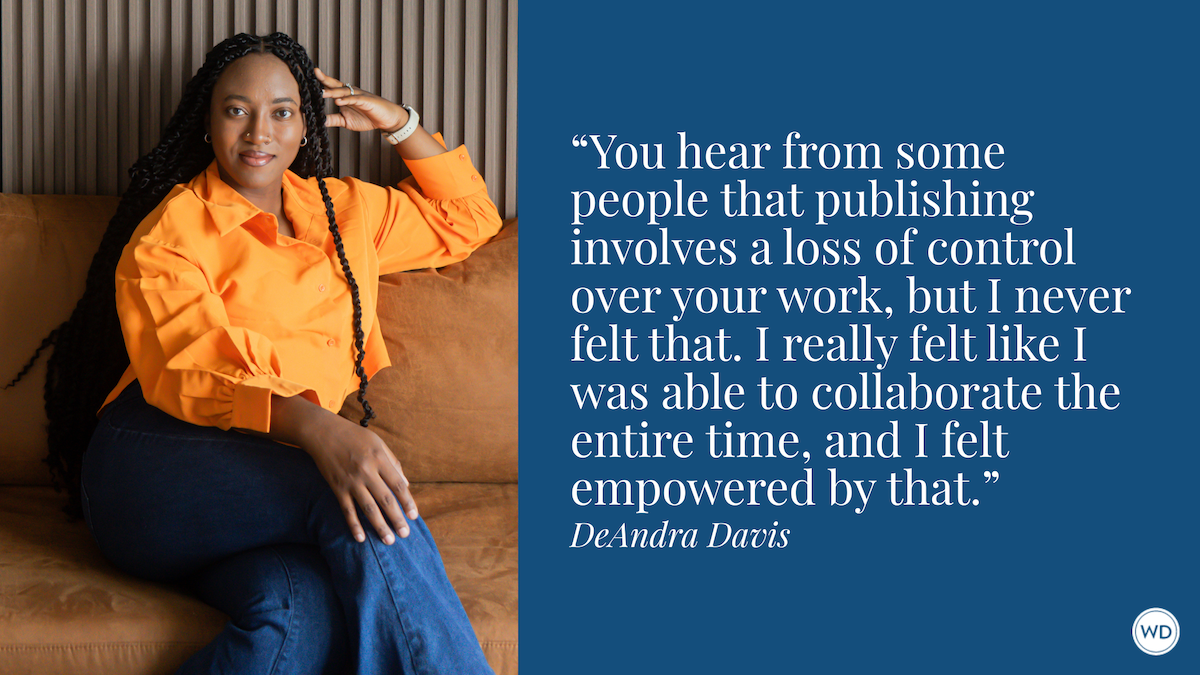5 Tips for Writing About Big Historical Events in Fiction
Novelist Anna Stuart shares her top five tips for writing about big historical events in fiction so that the story stays front and center…and engaging.
When I first started researching World War II, I was looking for interesting niches—nooks and crannies of the war that no one else had really touched on. My first novel, The Berlin Zookeeper, told a fictional version of the zoo's very real and dramatic fight for survival throughout the war. My second, The Secret Diary, explored women working the anti-aircraft guns in Britain's defense. But for my third, for some reason, I'd got my eye on Pearl Harbor. It's a truly fascinating element of World War II and clearly a critical one as it brought America into the fight, but it was hardly a nook or cranny. So how was I going to find my way into it? How was I going to make it my own?
The answer presented itself early into my research when I came across the fascinating fact that the first person to see the Japanese planes arrive over Pearl Harbor was a female flight instructor by the name of Cornelia Fort. Pursuing her down an enjoyable research track, I found that she was quite a character. And that she wasn't alone. There were a number of daring female pilots in America in that period, led by the famous Amelia Earhart and including the feisty Jaqueline Cochran, a girl from the Florida panhandle, who went on to win every aviatrix prize going—and to lead the fight to allow female pilots to help with the war effort in America, as they were doing in Great Britain.
What I had found was a sideways route into Pearl Harbor—one that allowed me to show the tragic events from a perspective not usually considered by many. Once I'd found that, I was well on my way to creating a protagonist, Ginny, a pilot who ended up in Pearl Harbor in the months leading up to December 7th 1941. The story grew out of my initial research into the attack but eventually the attack itself was just a small—if vital—part of that story.
So here I thought I would share a few short tips of things to consider when tackling a well-known event in your historical fiction.
1. Find your own angle on the event.
Look for your USP around your chosen event. For me, with Pearl Harbor, it was female pilots but every big event is, by its very nature, bound to have myriad sides. Your angle might come from an unusual fact you unearthed, or from a previously unexplored viewpoint. You might choose to create it by taking a sci-fi slant and adding in a time-traveler, or by playing with a virtual reality in which things turned out differently.
As long as you're open with the reader about devices you're using, the world is your fictional oyster. It's a wonderful thing to breathe new life into a well-known event, so put your thinking cap on and be original.
Read Anna Stuart's A Letter From Pearl Harbor:
(Writer's Digest uses affiliate links.)
2. Think carefully about what real-life characters to include.
My research into Pearl Harbor turned up many fascinating real-life people, from the President, to the lad on the radar no one listened to, to the man captaining an anti-sub boat out in the bay. One option was to tell one of their stories but you have to be very confident to step into the viewpoint of a real person. That's not to say don't do it—many wonderful historical novels are written that way—but I preferred to give myself the license to create a strong emotional story of my own so went for fictional main characters. Even then, I really wanted to include all of the known people but that would have clogged up the narrative and made it very fact-heavy and at the end of the day, we're writing story not history.
The key was to work out the vital plot arcs of my fictional main characters and then to think carefully about which real people they could genuinely have come into contact with. Even then, I included too many in the first draft and had to ruthlessly chop a couple out (the poor radar lad was one!) to leave room for the protagonists to breathe. Only let real people into your narrative (other than with passing mentions) if they are going to be critical to your core plot. Which takes me to…
3. Pin down your 'micro' story within the 'macro' historical one.
Consider the emotional pathways that you want to explore. Facts, like real-life people, do not make a novel, even a historical one. If you're anything like me, you will be quite happy burrowing into obscure research rabbit-holes but your job, then, is to pluck out the jewels that will make your own story sing. You're not there to present your reader with an account of whatever big event you've chosen, but to tell your protagonists' own story within that event.
That may well mean that you have to leave out "critical bits" if your characters are not going to be aware of them. It all comes down to viewpoint and whilst narrowing the focus into your protagonist's experiences may feel inhibiting at first, ultimately it will make the story tighter, more unique and more intimately dramatic.
4. Go for it with the description!
One of the key jobs of a historical novelist is to take their readers into the past and the only way to do that is with vivid description. That's not to say that you should have paragraphs of setting or facts. As with everything, story is the key so you should only show the place and the events as they dramatically impact upon your protagonist but, then, feel free to go for it!
Remember the basic but very crucial advice to write with all the senses. I forced myself to sit in Pearl Harbor with Ginny and work out not just what she was seeing but what she was smelling, tasting, hearing and touching for a truly 3D experience for the reader.
*****
Whether history is a backdrop to your story or the focus of the story itself, this workshop will provide you with the tools to find the facts you need, organize the data in a functional manner, and merge that data seamlessly into your novel. You'll discover the appropriate level of historical data to include as a function of a particular writing goal, learn the definition of historical markers and how and where to unearth them, and uncover the tools to integrate history, research, and the fiction plot arc. Most of all, find out how to honor verisimilitude—the goal of any historical writing—and avoid the dreaded anachronism. You'll learn to write scenes utilizing historical markers that further the plot and put your reader firmly in the place, time, and setting.
*****
5. Look at how your chosen event fits into the wider context.
It's possible that you might choose to write a novel that takes place entirely within the course of your event, especially if it's a protracted one, but it's more likely that it will form part of a chain of wider events that either led up to it, or on from it, or both. Where you choose to position your event in your narrative will be crucially important and the way to establish that is to decide the impact it has on your protagonist.
Perhaps they have been learning things all the way up to the event that come to fruition during it, in which case you might place it towards the end of the novel. Maybe the event sets them off an a previously unexpected path in which case, clearly, it should be near the start of your novel. Or perhaps, as with mine, it sits at a pivotal point in their life so finds a natural place in the centre of the narrative. There is no right and wrong answer—the key is to tell the protagonist's story in a natural way and to choose where to start and end your novel accordingly.
I hope you've found these thoughts helpful. To summarize—pick your event, find a unique way in, and make sure you tell an individual, emotional story within the history and you'll have a winner on your hands. Enjoy!
Anna Stuart lives in Derbyshire with her campervan-mad husband, two hungry teenagers and a slightly loopy dog. She was hooked on books from the moment she first opened one in her cot so is thrilled to now have several of her own to her name. Having studied English literature at Cambridge university, she took an enjoyable temporary trip into the ‘real world’ as a factory planner, before returning to her first love and becoming an author. History has also always fascinated her. Living in an old house with a stone fireplace, she often wonders who sat around it before her and is intrigued by how actively the past is woven into the present, something she likes to explore in her novels. Anna loves the way that writing lets her ‘try on’ so many different lives, but her favorite part of the job is undoubtedly hearing from readers. You can reach her on Facebook @annastuartauthor or Twitter @annastuartbooks.








